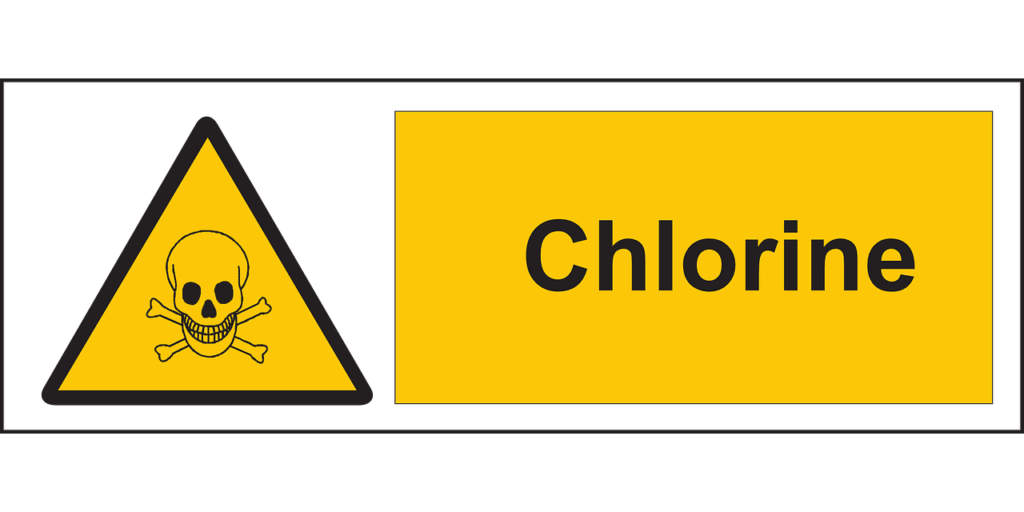
A senate panel kills a monitoring law and six days later a leak appears. Is the senate doing the right thing?
Six days after a state Senate panel killed legislation that would have required real-time air monitoring along the edges of major Louisiana industrial facilities, an Olin Chemical subsidiary had a significant chlorine gas leak that sickened 39 people. While the April 18 incident near Plaquemine caused mostly minor injuries — no one was hospitalized — the sponsor of the bill that would have required “fence-line” monitoring says the leak is a good example of why monitoring is necessary. Weeks after the leak, the Louisiana Department of Environmental Quality said the chemical plant issued inaccurate data during the emergency response. “The bottom line is that the exact purpose of the bill was to prevent these type of situations from happening,” said state Sen. Cleo Fields, D-Baton Rouge. “I do think that DEQ, you know, has to have some type of monitoring device around these facilities and not rely solely on the industry to provide the numbers to them.”
theadvocate.com
The spill is still being investigated.
DEQ hasn’t said whether the plant’s numbers were intentionally or accidentally misreported. The agency and Louisiana State Police are still investigating what went wrong. Iberville Parish President Mitch Ourso charged, however, in a letter to residents this month that the misreporting was a “breach of trust” by subsidiary Blue Cube. He alleged the company underreported the gas leak and that had the parish known the true extent of the problem, officials would have kept a stay-at-home order in place for another 1½ days, rather than just for a number of hours. Fields’ last three attempts to require real-time fence-line monitoring outside large industrial operations, made between 2020 and 2022, died in committee after opposition from oil and gas, chemical and other business interests.
Industry says don’t regulate us but they can’t regulate themselves. Profit gets into the way,
Fields said he has pursued monitoring since his constituents went uninformed about an ExxonMobil refinery fire a few years ago. Separately, for nearly six years, an iron plant operated by Nucor Steel in St. James Parish emitted sulfuric acid mist and hydrogen sulfide without authorization and exceeded permit limits for sulfur dioxide without anyone catching it. Nucor says it has since improved air controls. “Year after year our communities experience incidents of poor communication between companies, regulators, and the public; late reporting; and under reporting that puts workers and nearby residents at unacceptable risk,” said Marylee Orr, director of the nonprofit advocacy group Louisiana Environmental Action Network. “These incidents have shown time and time again that continuous, publicly accessible fence-line monitoring is necessary, and should be required, to keep everyone informed and safe.” DEQ, State Police and the U.S. Environmental Protection Agency each did their own air monitoring outside the Olin subsidiary while responding to the April 18 leak. DEQ and EPA say they didn’t detect chlorine levels in the neighborhoods near Olin that would have posed a significant health risk. DEQ officials said they received Olin’s air-monitoring logs three to four days after the leak — that raw data isn’t available in the moment — and discovered inaccuracies while conducting its standard after-action review. Greg Langley, a DEQ spokesman, said the agency also uncovered other questions on which he didn’t elaborate. Parish officials said they received separate reports that chlorine levels had been high enough to cause coughing and breathing problems with exposure of a few hours. In Olin’s first statement, made Aug. 11, about the allegations surrounding the April 18 leak, company officials said they worked closely with state and parish officials and provided “accurate, real-time information available at that time.”
It was caused by a compressor fire.
The compressor fire that triggered the chlorine release at Olin resulted in a towering, greenish gas cloud that alarmed many residents as they watched from their homes or nearby highways. Chlorine is a toxin that can be an asphyxiant in high concentrations. It is a heavier-than-air gas that can flow along the ground. At Olin, emergency responders sprayed water on the leak to make it more buoyant so it would rise and dissipate high into the air. At more than 6,500 pounds, however, the release amounted to more than a years’ worth of Olin’s permitted emissions in a day and a half, according to follow-up company reports to DEQ and federal emissions data.
Residents near the plant are not surprised.
Some Plaquemine-area residents who live just south of Olin said they weren’t surprised about the under-reporting claims. Ashley Richard, 38, said she returned to her home around 12:30 a.m. April 19 and found it filled with a “very, very bad” chlorine smell. She ended up bringing her daughter to the doctor the next day because the child’s tonsils were so severely inflamed. Though her child ended up having a bacterial infection in her throat, Richard said, her doctor told her the chlorine gas worsened the inflammation. The whole experience has left Richard unsure about whether to trust local officials and companies during future chemical incidents, she said. “It’s hard to. It’s really hard to, being what I came home to,” Richard said.
More monitoring will cost money industry does not want to spend.
In testimony over Fields’ legislation during the past two years, industry representatives have said a new monitoring requirement would affect more than 532 large-scale industrial operations in the state. Monitors would cost industry $500 million to $1.6 billion to install, plus tens to hundreds of thousands of dollars more per plant per year to keep up with the new load of data. Advocates say the figures are exaggerated and that many plants already monitor and could simply make the data public. In any case, DEQ officials would need another $7 million to $8 million per year to hire people and take on other costs to manage all the data, according to a legislative fiscal note. Agency officials say they take no position on the need for fence-line monitors but, in testimony, said they would need to find money within a revenue base that relies on fees and grants. Louisiana Chemical Association representatives and some legislative allies questioned whether monitors could create false alarms or incorrectly attribute emissions from other sources to plants depending on which way the wind blows. State Sen. Eddie Lambert, R-Gonzales, who leads the Senate committee that has repeatedly killed Fields’ legislation, said even if monitors were accurate, industry representatives would still need to be involved by disclosing what has leaked and how much more might escape.
Nothing DEQ monitors tracks chlorine.
DEQ has a statewide network of around 40 strategically located ambient air monitors, but not one of them directly tracks chlorine gas, a critical and common building block in the state’s petrochemical sector, and many other regulated toxins. Funded in large measure through federal grants, DEQ’s monitors mostly track regional-scale levels of what are known as criteria pollutants, the latest state listing shows. Sulfur and nitrogen oxides and ground-level ozone are known to create harmful smog, for instance, while fine dust and other minute particles can embed in the lungs and blood stream to create breathing and cardiovascular problems. In 2015, EPA required oil refineries to provide fence-line monitoring for benzene, a volatile organic compound that is a carcinogen. The data aren’t real-time, however, but are provided quarterly on an EPA website and are geared to help refiners reduce emissions in the longer term. Refiners also share the data on their own websites, as ExxonMobil in Baton Rouge does. The rule doesn’t apply to chemical facilities like Olin, however.
The proposed legislation would solve this question.
Fields’ legislation would have required companies to set up real-time fence-line monitors to track criteria pollutants — the batch of chemicals and particles on which EPA most focuses — and any toxins that an individual plant is permitted to release through controlled routes, as Olin is with chlorine and other toxins. State Sen. Patrick Connick, R-Marrero, tried in 2021 to limit the rules even further in a bid to aid passage by targeting previous “bad actors” only, but Connick said industry representatives successfully blocked monitoring. “But because of that, this is what you’re getting,” Connick said. “You’re getting people getting sick and getting hurt and our air’s being polluted, and we have elected officials looking the other way.”
Industry will fight anything that costs them money, even if it is to protect those who buy their product.



